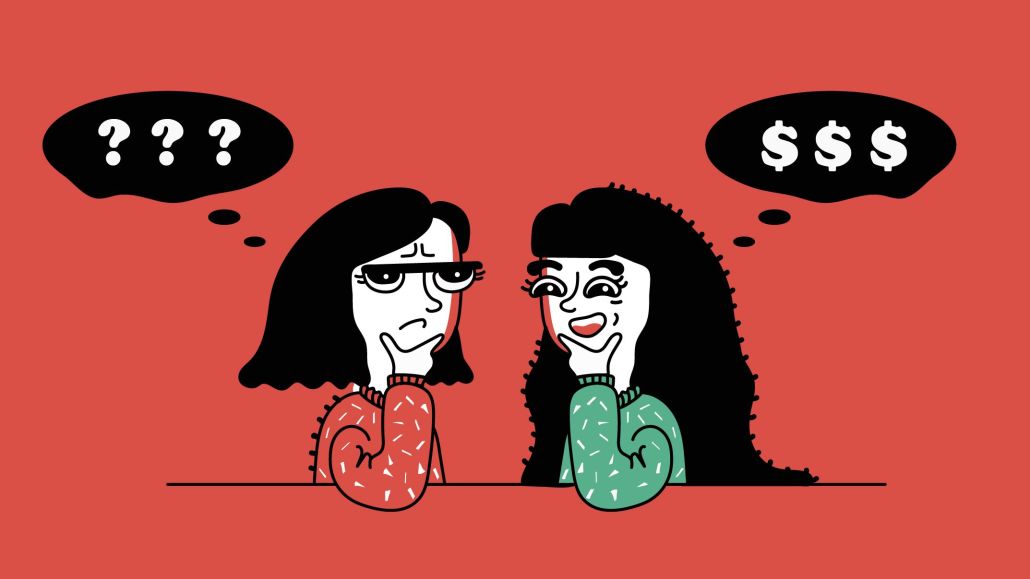Insights from CTV leaders at Dentsu, Horizon Media and more

After seeing continued growth in the number of paying members to its two subscription products, CNBC will begin testing a price increase for at least one of those subscriptions next year.
CNBC has two subscription offerings. Launched in January, Investing Club provides subscribers with access to CNBC host Jim Cramer’s market analysis and research, his charitable trust portfolio, as well as trade alerts and monthly live meetings, for $400 a year. CNBC Pro, on the other hand, debuted roughly a decade ago and provides expanded access to CNBC’s content, including its live TV feed and a subscriber-only newsletter, for $300 a year.
CNBC will likely begin its subscription price testing in the first quarter of 2023, after the first renewal period for the Investing Club, said Margaret de Luna, gm and svp of CNBC’s direct-to-consumer business. Existing subscribers will be grandfathered in at their current prices, but new subscribers to CNBC Pro could see a yet-to-be-determined price hike.
The new rate will be determined with varying site offers. A price increase on Investing Club would be based on those results, de Luna said.
It’s the first time CNBC would raise the price on a CNBC Pro membership.
“It’s starting to move us out of the infancy stage [and] towards being a sophisticated digital consumer subscription business,” de Luna said.
Given that it’s been available for a decade and publishers have faced increasing costs due to factors like inflation and higher labor costs, it makes sense to experiment with subscription price increases, said Matt Lindsay, president of subscription management and customer data analytics firm Mather Economics which works with publishers. A potential recession on the horizon could also push publishers to diversify, he said.
A number of publishers are testing subscription prices, Lindsay said, declining to share which ones he was privy to. The New York Times’ president and CEO Meredith Kopit Levien said in the company’s Q3 2022 earnings call that the publisher is considering upping the price of its individual products in the coming months to “drive more people to take our bundle.”
“If everything is going up in price, and subscriptions aren’t, then subscriptions are becoming less expensive than everything else,” he said. And increasing subscription prices does not necessarily lead to additional churn, he said, citing Mather Economics studies from previous recessions and inflationary periods.
CNBC’s direct-to-consumer team has grown from a team of five to 70 since de Luna joined in July 2021. Its dedicated subscription marketing team now has six people, up from just one person last year. The expanded marketing team focuses on acquiring new subscribers, price testing and finding the right tech for its subscription business, allowing the company to run acquisition pricing tests, de Luna said.
Right now, the CNBC team is in the “modeling phase” to determine what the new subscription prices should be and if they will offer additional subscription terms, such as a quarterly or a six-month subscription, she said. Previously, its model was based solely on the number of “marketing exposures” (article and video paywalls, for example) driven by page views, and a conversion rate from those exposures. The team did not analyze new subscriptions by channel (such as hitting the paywall, email marketing, paid marketing and social).
In the past year, the CNBC team built “a very specific operational model where we can make assumptions for different levers,” de Luna said. It breaks down new subscriptions by channel, for example.
CNBC has seen significant growth in its number of subscribers year-over year. It has tripled its active paid subscribers, according to the company. de Luna declined to share how many subscribers CNBC has. 63% of CNBC’s subscriber base is coming from the “CNBC funnel” (versus paid marketing), mostly through CNBC.com or its apps, she said.
CNBC is also looking into offering a subscription bundle down the line.
“Bundling is a great tool. It is, from the business side of things, the safest way to increase the revenue that you get from a subscriber because you get to charge individual subscribers more… You’re delivering something that is better for them or that they want versus just raising an individual price,” de Luna said.
Last year’s Cyber Monday was the first time CNBC offered a special price for Pro. It offered a three-month introductory price of $59.99, which auto-renewed to an annual subscription (the subscription is usually $29.99 a month). The special offer resulted in doubling the monthly new subscriber average for Pro, de Luna said, who declined to give exact figures. New subscribers will also get access to “Pro Week” this week, with daily, on-demand “Pro Talk” videos featuring investors and analysts sharing their market insights.
This year, the company is offering that deal again from Nov. 15 to Dec. 2, as well as providing a special price for a two-year subscription to the Investing Club for $499.99 and an annual subscription for $299.99 (usually $399.99).
More in Media

Digiday+ Research: Publishers pull back their dependence on digital revenue
After a year in which publishers shifted their revenue dependence away from traditional channels and toward digital channels, 2025 has seen a shift back toward more of a balance between traditional and digital revenue sources.

LinkedIn makes it easier for creators to track performance across platforms
Creator data is becoming more accessible to third-party vendors via a new API — another step in LinkedIn’s creator platform evolution.

Ad Tech Briefing: The ‘plumbers’ posing as the unlikely saviors of the internet
After several false dawns, can Cloudflare’s ‘anti-AI scraping tool’ finally offer publishers a road to commercial redemption?








